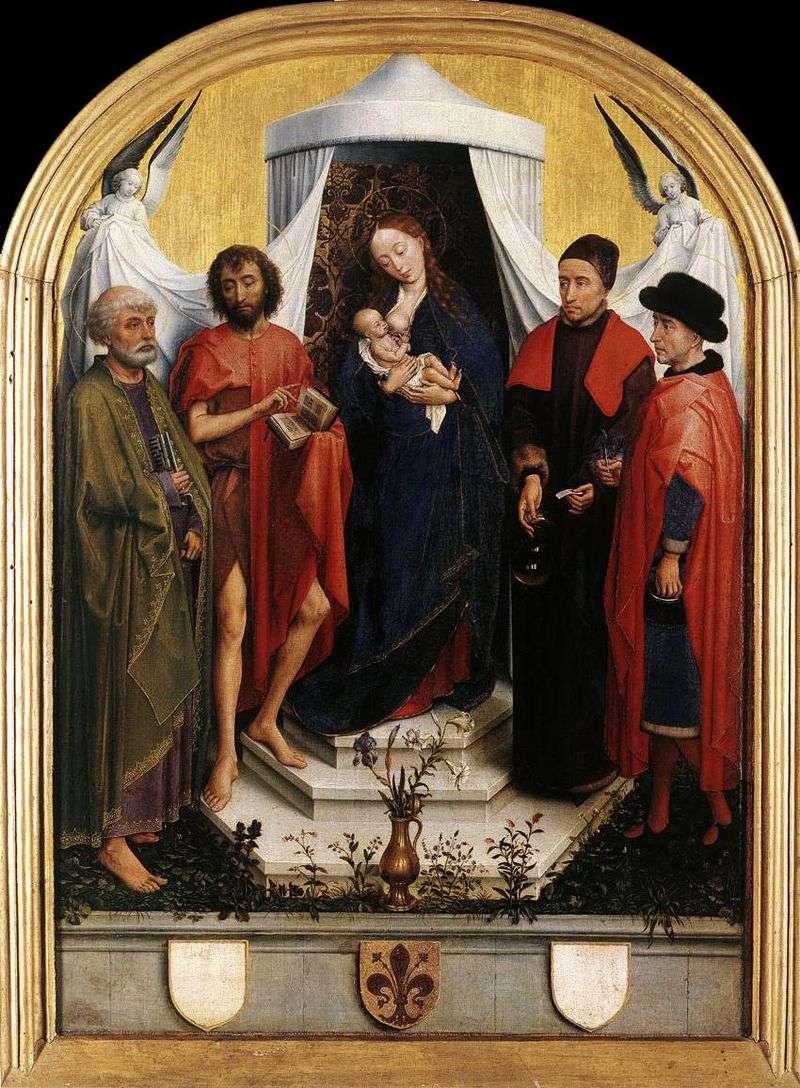
Even during the life of Rogier van der Weyden, his work became widely known in Italy. Among his customers there were many noble and wealthy Italians. According to some reports, the master himself also visited Italy in 1450. The Italian influence is felt, at least, in two paintings, written either by Rogier himself, or left from his studio. This is “Lamentation of Christ” and “Madonna with the Child and the Four Saints”. Both paintings were created, apparently, soon after Rogier’s trip to Italy.
In “Drink” the “Italian trace” is seen, first of all, in the pose of the dead Savior. And the whole composition of the picture too clearly echoes with Fra Angelico’s “Position in the Coffin” in order to find this roll call random. In particular, the tomb of Christ is depicted in the form of a cave – that is, exactly as it was depicted by Italian artists.
As for the “Madonna with the Child and the Four Saints”, it is necessary to note the symmetry of the composition, which is also more characteristic of Italian painting than for the fine arts of northern Europe. In addition, on the shield placed at the bottom of the picture, the viewer can notice a lily – the heraldic symbol of Florence.
Subsequently, the Medici family acquired both pictures, and this suggests that they were once ordered by someone from that family. Another noble Italian family, with whom Rogier was associated, is Este. It is known that he painted a portrait of Francesca d’Este, the illegitimate son of Leonello d’Este.
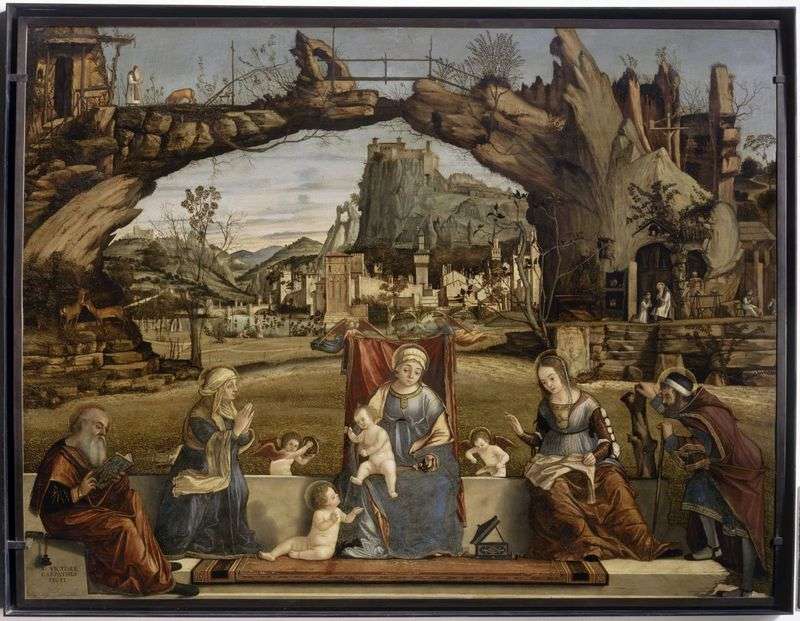 Madonna and Child and Saints by Vittore Carpaccio
Madonna and Child and Saints by Vittore Carpaccio Vierge à l’enfant avec les quatre saints – Rogier van der Weyden
Vierge à l’enfant avec les quatre saints – Rogier van der Weyden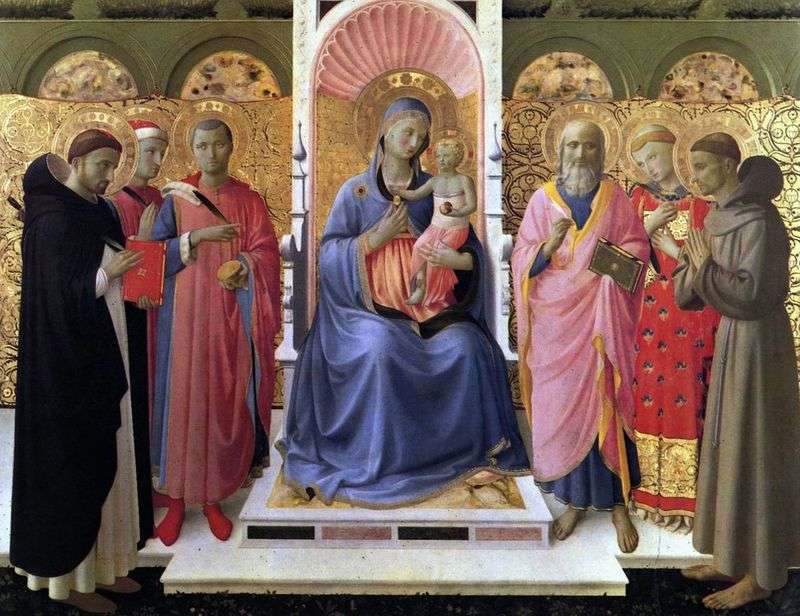 Madonna with Child and Saints by Angelico Fra
Madonna with Child and Saints by Angelico Fra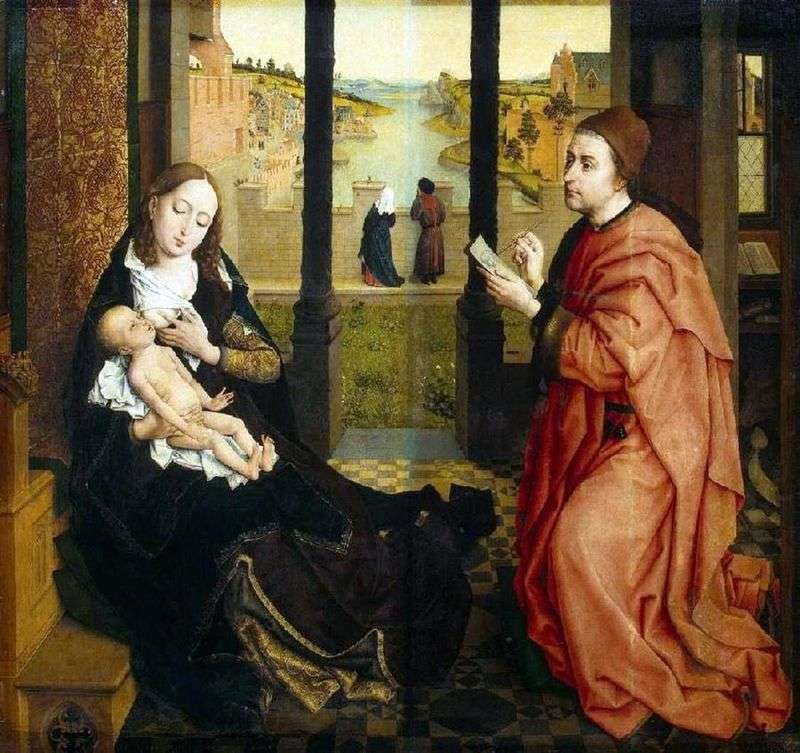 St. Luke, drawing the Madonna by Rogier van der Weyden
St. Luke, drawing the Madonna by Rogier van der Weyden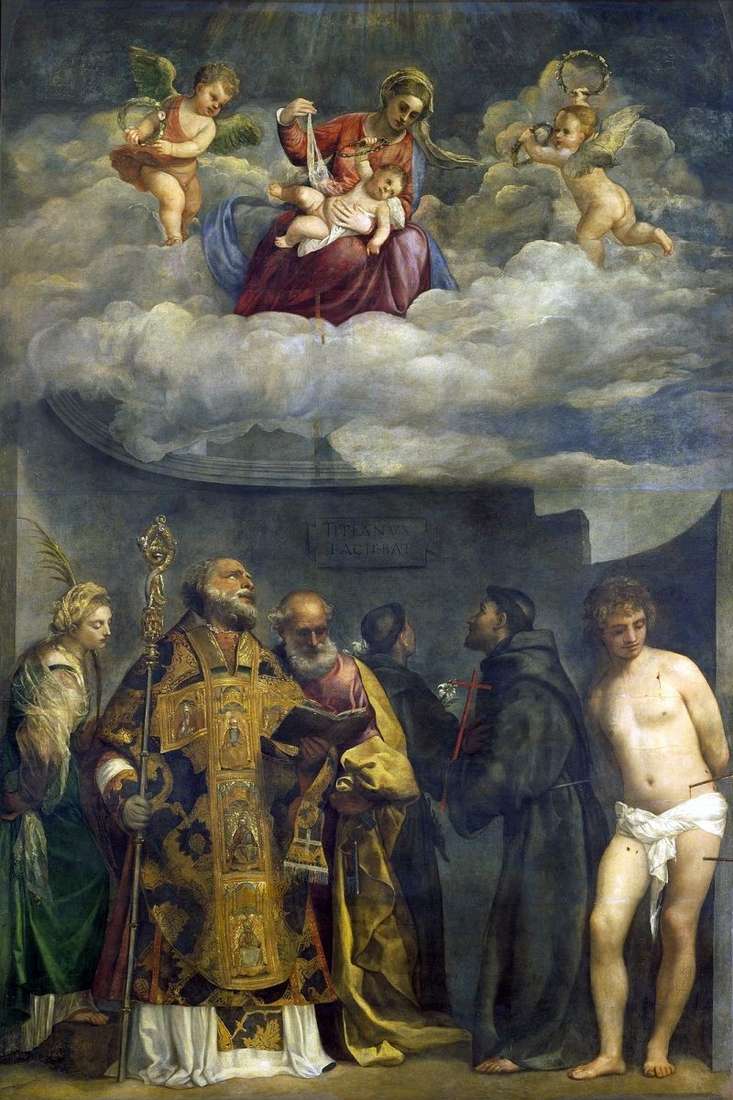 Madonna and Child and Saints by Titian Vecellio
Madonna and Child and Saints by Titian Vecellio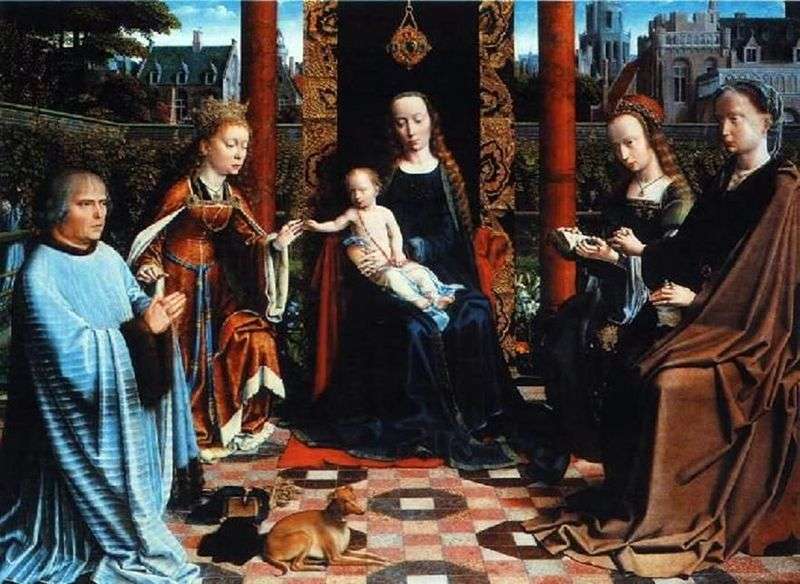 Madonna with Child, Saints and Donator by David Gerard
Madonna with Child, Saints and Donator by David Gerard Madonna with Child and Saints by Giovanni Bellini
Madonna with Child and Saints by Giovanni Bellini Madonna with the Child and John the Baptist by Vittorio Carpaccio
Madonna with the Child and John the Baptist by Vittorio Carpaccio